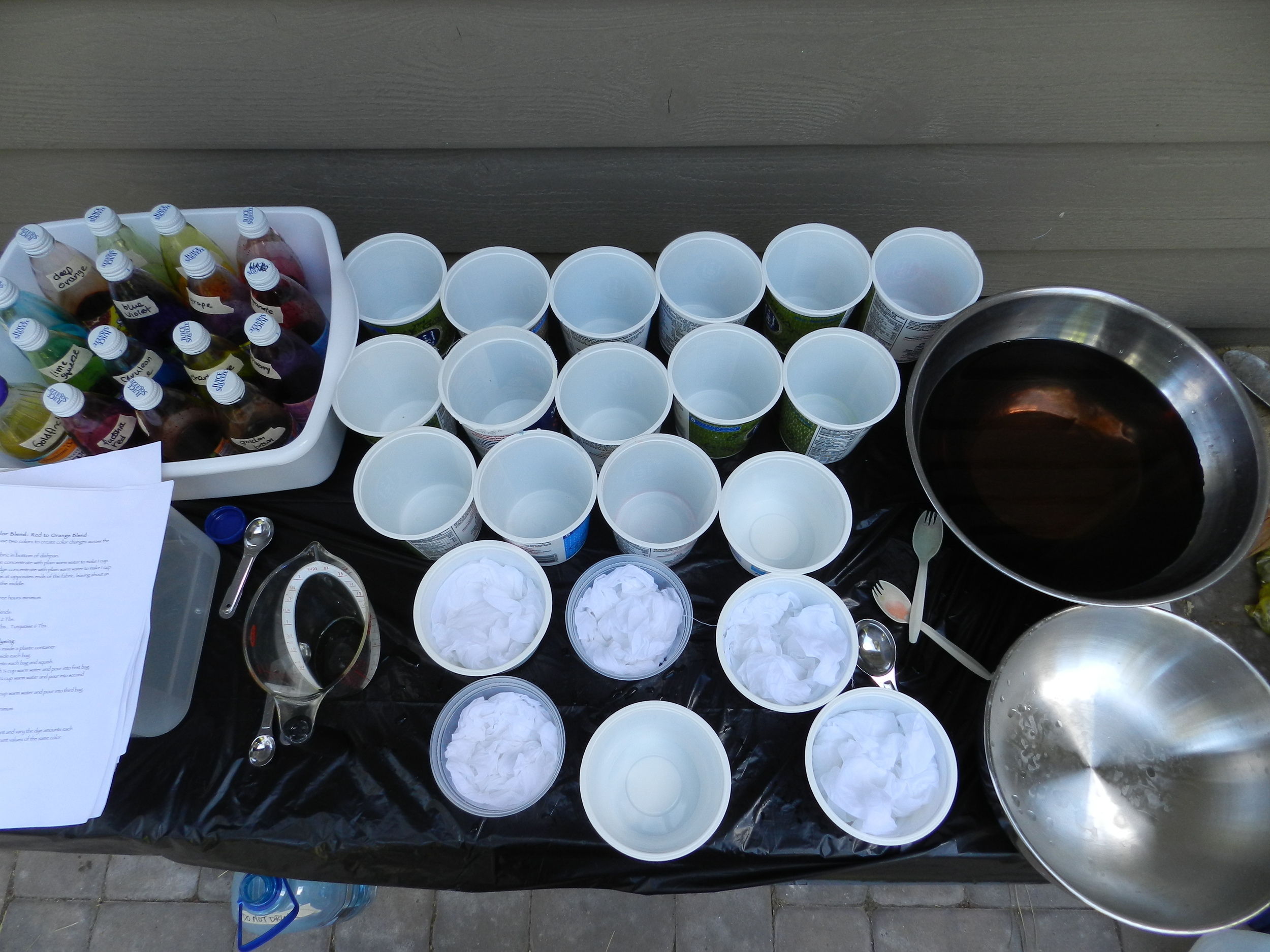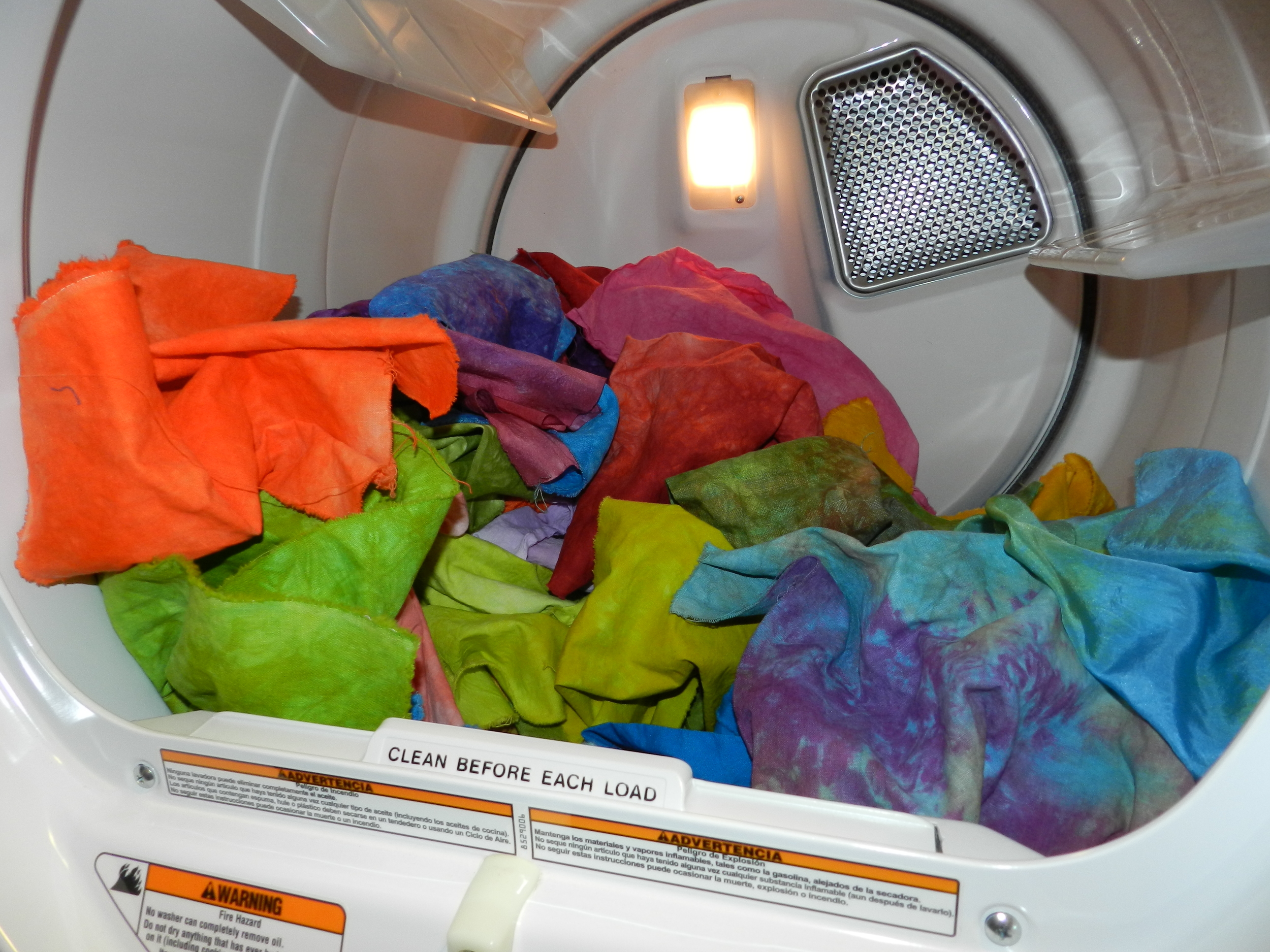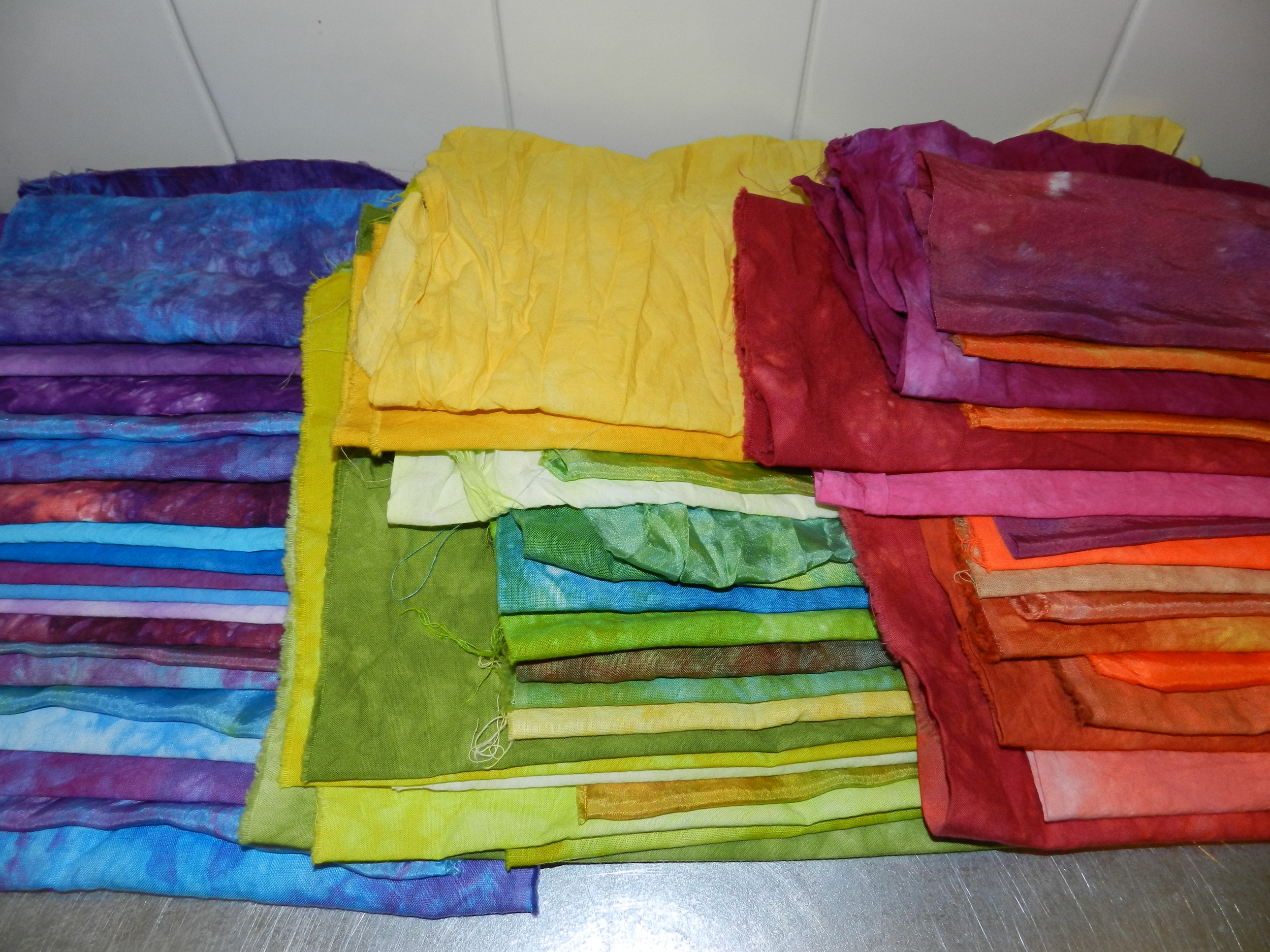Are you ready to dye?
Continued from Part 1. The fabric needs to be pre-soaked for 30 minutes in a soda ash solution. I keep my solution in a 5 gallon bucket with lid because it can be re-used over and over. I find the buckets and lids at Ace Hardware and it's totally worth the extra money. It's liquid tight and gives me lots of peace of mind. I have one for soda ash, one for my walnut dye and one for my indigo dye. To make the soda ash solution, dissolve 9T of soda ash in 1 gallon of warm water. I usually have several gallons of this in the bucket so that I can soak lots of fabric at once. Be aware that soda ash is hard on silk fabrics, so I don't let those soak for any longer than necessary. You can buy soda ash from Dharma Trading Co., or you can get it at a hardware or pool store. It's also known as sodium carbonate.
So, soak those precut fabrics for 30 minutes while you get set up. You need to have lots of containers. I used to use ziploc bags, but got smarter and now do my dyeing in reused yogurt containers and some old plastic bins, metal bowls and plastic dishpans. These clear containers below came from the Thai restaurant. Perfect! I love doing double duty with stuff like this. They are reused over and over for dyeing.
I also like to have a bowl of clean water for rinsing as I go along, my measuring cup and spoons (dedicated to dyeing, of course), extra bowls and rags nearby for messes. My table is also covered with a black trash bag, though I've thought about getting some painter's plastic. Someday I might try Robin Ferrier's method of flat dyeing. Have you seen that?
Whenever I dye, I usually start out all scientific-like, measuring carefully and maybe even keeping notes. By the end of the dye session my inner mad scientist has come out and things can get a little crazy.
Here's the scientific way for dyeing a fat quarter in a cup:
- measure 2T of dye concentrate in to your measuring cup, add water to 1/4 cup and pour over the fabric in the dye cup. Squish a bit to make sure it's wet all the way through. The more you manipulate the fabric, the less variation in pattern you will get. Although, I've noticed with silks that there is less variation over all no matter what I do.
You can do the parfait syle, which is going on in those cups up above:
- measure 2T of dye concentrate in your meausuring cup, add water to equal 1 cup. Pour over 1 fat quarter in the dye cup. After 5-10 minutes, add another fat quarter and smoosh down. After another 5-10 minutes, add your third fat quarter and smoosh down. You will get three values of your color in one cup.
After a while though I get tired of measuring and start to eyeball the amount of dye. I also know that I can use varying amounts of dye to get various values. Sometimes I'll use 1 T in a 1/4 of water. Sometimes I'll use 1 teaspoon in 1/4 c of water. It's fun to experiment!
In between colors, I usually just rinse the cup and spoon in the water bowl. I am not trying to get any specific colors so I don't mind if colors mix. The happy accidents are what makes this fun. Actually, perfect is boring anyway. We are here because we like to be creative!
Another fun thing to do is color gradations. You would want to mix up enough dye in one color to add to one end of the fabric and the same amount of another color to add to the other end. I often do this with 1/2 yards of fabric, so I use about 1 cup of water total and 1-2 T of dye in each half cup for either end. Smoosh the fabric around a bit to mix it up and let it sit with all the rest.
Once you've made your various dye cups, they need to sit for at least 3 hours. Again, if you have silk in there, you probably shouldn't let them sit for days, though until the following morning is probably fine. I like to rinse the cups and fabrics in my laundry sink, then I put all the fabric in the washer at once with some synthropol. You can get that at Dharma, but all my local quilt stores carry it as well. Synthrapol has chemicals that bind to the excess dye in the washer and rinse it away from the fabric. I don't have any color transfer so I can wash all colors together.
One of the prettiest sights in the world! And, I'm still ironing! More to come.





